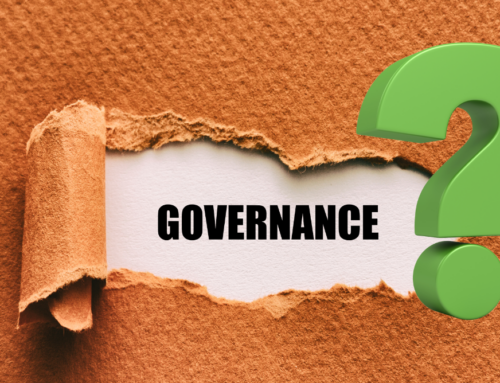Why Boards Do Strategic Planning
Strategic planning is a key responsibility of the Board. There are two reasons for preparing a strategic plan for the organization (many organizations get this wrong).
The first is to mitigate risks to the organization. Identifying and mitigating risk is a critical Board role. There are four key areas of risk: 1) financial – like fraud 2) legal – literally, breaking the law 3) external – like a new government regulation, competitor, innovation 4) internal – like a dangerous operating process. Almost all governance failure stems from Boards failing to identify and mitigate one of these critical risks. Some Boards inadvertently create risk by approving strategies that are executed dangerously (for example focusing on profitability at the expense of safety).
The second reason for preparing a strategic plan is to execute the organization’s mission as effectively as possible. The organization’s mission defines who the organization serves and how it serves them. Marketing, distribution, fund raising, education, government relations are all examples of strategies that organizations use to help them execute their mission better.
The Role of the Board in Strategic Planning
Although Boards often believe their role is to author the strategic plan, this is false. The management team in most organizations has more time, insight and resources available to create the plan. Then, they bring it to the Board as a recommendation.
Once written, it is the Board’s role to validate the strategic plan recommendation. Validation is due diligence – verifying inputs, data, assumptions, conclusions and direction. In some cases, the Board will bring in their own experts (consultants) to verify (or reject) key elements of the plan. Once the plan has been validated, the Board’s role is to approve it and direct management to undertake execution.
If the Board cannot fully validate the plan (it does not accept the recommendation), then the plan goes back for additional work.
Finally, the role of the Board in strategic planning is to oversee execution of the plan. Few plans work out exactly as planned and it is the Board’s role to understand progress and ensure management makes adjustments when necessary.
Ensuring the organization has the right CEO and measuring how well the CEO executes the strategic plan is a basic role of the Board of Directors.
Client Learning on Board Role and Strategic Planning
Some of our observations working with clients on strategic planning include:
- There is frequently confusion between strategic planning and annual operating plans. Strategic direction evolves slowly. It does not change every year which is why many strategic plans are written for 3 years. But the work required to execute them does change more quickly. For example, a strategy of expanding distribution may last five years. But every year, the work or expanding distribution – from planning, through finance, HR, sales and marketing will vary. Annual operating plans define the goals, budgets and work the organization will do on its strategic priorities. Organizations who confuse operating plans for strategic plans miss the big picture. They focus on operations at the expense of risk mitigation and long term mission-building.
- Understanding the organization’s mission is crucial. Even long-standing organizations can become confused over time about who the organization serves and how it serves them. That confusion makes strategy and accountability more difficult. We urge all of our clients to constantly review and remind themselves who their organization serves and how it serves them.
- Mission, then vision. Vision statements can be helpful. There are both inspirational and aspirational. However, it is impossible and inappropriate to develop a vision statement without first understanding the mission (who we serve and how). Without the grounding provided by the mission, visions can be misleading. The typical result is that the vision has almost no chance of becoming real.
A Helpful Post on Strategic Planning
This post on facilitating a strategic plan is one of them of the most viewed pieces of content on our website. The learning is helpful whether the strategic plan takes two hours or two months to develop.
Strategic Planning Book Guide for Boards
Summary
By ensuring that there is a strategic plan, the Board helps mitigate risk to the organization and the long term achievement of the organization’s mission. The Board’s role is oversight – it is not necessary for the Board to actually write the strategic plan recommendation.
The other key role of the Board in strategic planning is holding the CEO accountable for execution. It is still quite common for organizations to prepare detailed strategic plans, then leave them sitting on the shelf. Measuring the CEO on strategic plan execution ensure this doesn’t happen.
Additional information on strategic planning and the Board of Directors can be found on this site and on the Boardroom Metrics YouTube Channel.







Leave A Comment